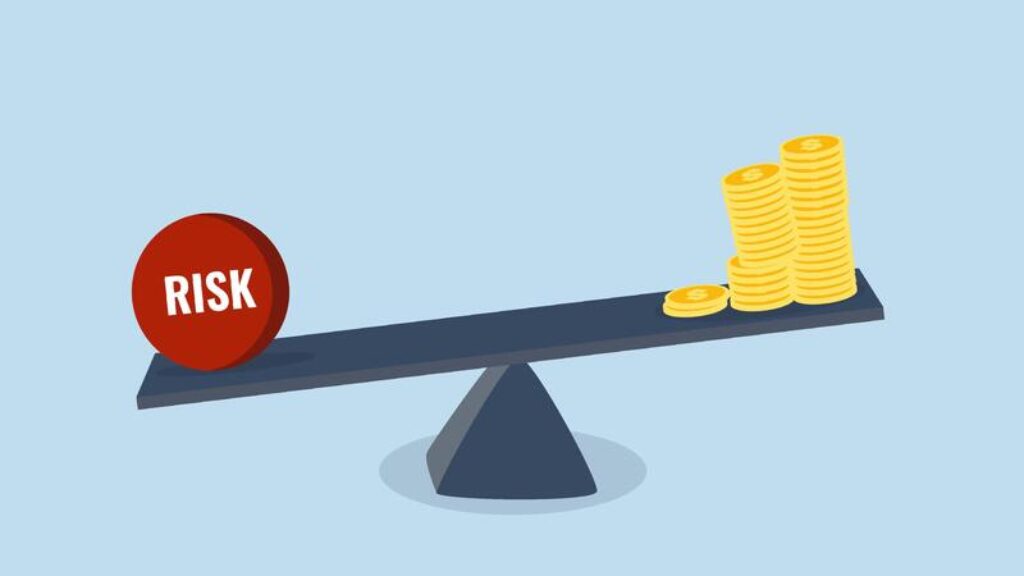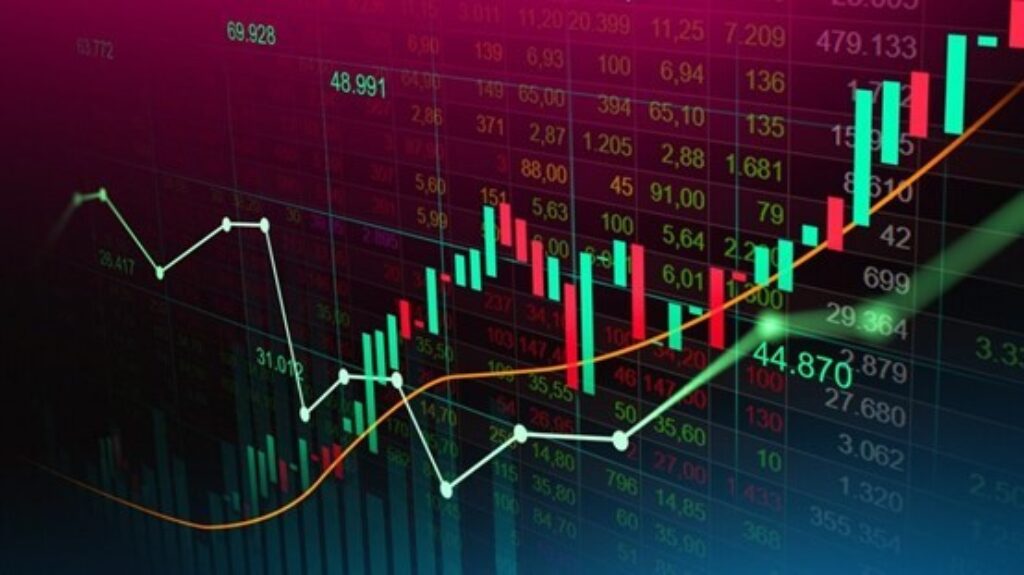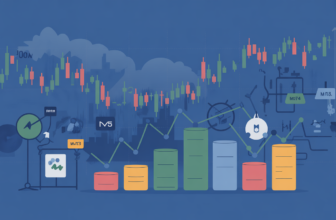
In the world of forex trading, success hinges on more than just picking the right currency pairs. One of the most crucial aspects of long-term profitability is maintaining a favorable risk-reward ratio. As a forex day trader, I’ve learned that without proper risk management, even the best strategies can lead to significant losses.
But what is the risk-reward ratio? Simply put, it’s the amount of risk taken on a trade relative to the potential reward. Understanding how to calculate and apply a favorable risk to reward ratio can mean the difference between consistent gains and an account wipeout.
Forex Risk-Reward Mastery
Essential knowledge for consistent trading profitability
Example: Win Rate vs. Risk-Reward
Scenario 1: 70% win rate, 1:0.5 risk-reward ratio, 10 trades
7 wins × $50 = $350 profit
3 losses × $100 = $300 loss
Net profit: $50
Scenario 2: 40% win rate, 1:3 risk-reward ratio, 10 trades
4 wins × $300 = $1,200 profit
6 losses × $100 = $600 loss
Net profit: $600
Conclusion: The lower win rate with better risk-reward ratio outperforms by $550!
As billionaire hedge fund manager Ray Dalio emphasizes,
“I’m wrong a lot, but I win by setting my risk-reward ratios correctly. The goal isn’t to be right, it’s to make more when you’re right than you lose when you’re wrong.”
This philosophy underlies the success of Bridgewater Associates, one of the world’s largest hedge funds.
What is the Reward-to-Risk Ratio?
The reward to risk ratio formula is simple:
Reward-to-Risk Ratio = Potential Profit / Potential Loss
For example, if I risk $100 to make $300, my risk-reward ratio is 1:3. This means that even if I only win 40% of my trades, I can still be profitable.
According to trading expert and author Mark Douglas, “The consistency you seek is in your mind, not in the markets. Traders must control risk and focus on probabilities.”
This is why professional traders emphasize having a good risk to reward ratio—it’s about stacking the odds in my favor.
Professional traders often view trading as a probability game, similar to how casinos operate. While individual trades may result in losses, the overall mathematical expectancy remains positive with a favorable risk-reward ratio. This approach transforms trading from gambling to a calculated business operation where losses are viewed as a normal cost of doing business rather than failures.
Renowned trader Ed Seykota puts it succinctly:
“The elements of good trading are cutting losses, cutting losses, and cutting losses. If you can follow these three rules, you may have a chance.”
His emphasis on risk control over profit-chasing has made him one of the most successful traders profiled in Jack Schwager’s “Market Wizards” series.
The psychological advantage of using proper risk-reward ratios cannot be overstated. When traders know their system has positive expectancy over time, they’re less likely to deviate from their strategy during inevitable losing streaks. This mental fortitude is often what separates successful traders from those who fail.
Why is the Risk-Reward Ratio Important for Forex Day Traders?
Risk-Reward Ratio Calculator
Many traders focus on their win rate, but without an effective risk/reward ratio, even a 70% win rate can be unprofitable. Let’s look at an example:
A trader wins 7 out of 10 trades (70% win rate)
Each winning trade earns $50, and each losing trade loses $100
Total profit: 7 × $50 = $350
Total loss: 3 × $100 = $300
Net profit: $50
Now, let’s assume a trader wins only 40% of their trades but uses a 1:3 risk reward ratio:
Winning trades: 4 × $300 = $1200
Losing trades: 6 × $100 = $600
Net profit: $600
Even with a lower win rate, the best risk to reward ratio for day trading ensures profitability in the long run.
The volatility of the forex market makes relying solely on high win rates particularly dangerous. Currency pairs can make sudden moves due to economic announcements, geopolitical events, or large institutional orders. These unpredictable events make it nearly impossible to consistently achieve very high win rates, which is why professional forex traders prioritize risk-reward management over win percentage.
Kathy Lien, Managing Director of BK Asset Management and bestselling author on forex trading, notes:
“The number one mistake forex traders make is having a high win rate but a negative expectancy due to poor risk-reward ratios. Professional traders are willing to be right only 30% of the time if their winners are three times the size of their losers.”
Another crucial consideration is the impact of trading costs. Spreads, commissions, and slippage can significantly erode profits, especially for day traders who make multiple transactions daily. A proper risk-reward ratio must account for these trading costs to provide an accurate picture of potential profitability. For instance, if the average spread on EUR/USD is 1 pip, a trader must factor this cost into their risk-reward calculations, particularly for scalping strategies where profits might be only a few pips per trade.
How to Calculate Risk to Reward Ratio
Understanding how to calculate risk to reward ratio is crucial. A simple step-by-step method is:
- Determine the entry price and stop-loss level.
- Set the take-profit level based on the desired reward to risk ratio formula.
- Use a risk to reward ratio calculator or manually divide the potential reward by the potential risk.
For example, if I enter a trade at 1.1200 with a stop-loss at 1.1180 (20 pips risk) and a take-profit at 1.1260 (60 pips reward), my risk-reward ratio is:
60 pips / 20 pips = 3 (or 1:3)
When calculating your risk-reward ratio, it’s important to consider multiple timeframes for confirmation. A trade might show a favorable risk-reward ratio on a 15-minute chart, but checking higher timeframes like the 4-hour or daily chart can reveal potential resistance or support levels that might limit profit potential. Multi-timeframe analysis helps traders refine their take-profit levels for more realistic reward expectations.
Position sizing is an integral part of risk calculation that many novice traders overlook. The optimal position size depends on your account size, risk tolerance, and the distance to your stop-loss. A general rule among professional traders is to risk no more than 1-2% of trading capital on any single trade. For example, with a $10,000 account and a 2% risk tolerance, you would risk no more than $200 per trade, regardless of how favorable the risk-reward ratio appears.
Advanced traders also incorporate volatility measurements like Average True Range (ATR) when calculating their risk-reward ratios. The ATR provides a dynamic measure of market volatility, helping traders set more appropriate stop-loss and take-profit levels based on current market conditions rather than arbitrary pip values.
Dr. Alexander Elder, psychiatrist-turned-trader and author of “Trading for a Living,” advocates this approach: “ATR-based stops allow you to adapt to market conditions rather than impose your will on the market. A stop that’s too tight in a volatile market guarantees failure, while one that’s too wide needlessly increases risk. The market tells you how much room it needs.”
What is a Good Risk to Reward Ratio?
While there is no universal answer, many traders agree that the best risk to reward ratio for day trading is at least 1:2. This means for every dollar risked, the potential reward should be at least two dollars.
Some traders prefer a 1:3 risk reward ratio, which allows for more losses while maintaining profitability. However, a negative risk to reward ratio (e.g., risking more than the potential reward) is a recipe for disaster.
Different trading styles may require different risk-reward approaches. Swing traders, who hold positions for several days or weeks, often aim for higher risk-reward ratios (1:4 or even 1:5) to compensate for fewer trading opportunities. Scalpers, on the other hand, might work with lower ratios like 1:1.5 but compensate with higher frequency and win rates.

Rob Booker, veteran forex trader and author, explains this distinction: “Successful scalpers need win rates above 70% with tight risk management, while position traders can thrive with 40% win rates and larger risk-reward ratios. The key is matching your risk parameters to your timeframe and trading frequency. What works for a 5-minute chart trader can be disastrous for a daily chart trader.”
Market conditions also dictate appropriate risk-reward expectations. During trending markets, traders can often achieve higher reward multiples as price movements tend to be more directional. Conversely, during choppy or ranging markets, more conservative risk-reward targets might be prudent as large price moves are less likely.
Some professional trading desks employ variable risk-reward ratios based on market volatility indexes like VIX or currency-specific volatility measures. When market volatility is high, they might require higher potential rewards to compensate for the increased uncertainty. This dynamic approach to risk-reward management adapts to changing market conditions rather than applying a one-size-fits-all approach.
Using a Risk to Reward Ratio Chart
A risk to reward ratio chart visually represents different risk-reward ratios and their impact on profitability. Many trading platforms provide these charts, but traders can also create their own based on historical trade data.
Risk-reward ratio charts can be enhanced with probability metrics derived from historical data. By analyzing past market behavior, traders can estimate the probability of reaching their take-profit level versus hitting their stop-loss under specific market conditions. This statistical approach adds another dimension to risk-reward analysis, helping traders identify scenarios with the highest probability of success.
Advanced trading journals and analytics software can generate personalized risk-reward charts based on a trader’s historical performance across different currency pairs and market conditions. These customized visualizations help traders identify their strengths and weaknesses, showing which market scenarios offer them the best risk-reward opportunities based on their trading style and strategy.

Some traders also use risk-reward heat maps that overlay potential risk-reward ratios on price charts. These visual tools highlight zones on the chart where favorable setups might occur, helping traders spot opportunities more efficiently during live market sessions.
Monte Carlo simulations represent another sophisticated approach to visualizing risk-reward scenarios. These mathematical models run thousands of simulated trading scenarios based on a strategy’s risk-reward parameters and market conditions, providing insights into potential account growth trajectories and drawdowns over time. This forward-looking analysis helps traders understand the long-term implications of their risk-reward approach.
Avoiding Common Risk-Reward Mistakes
Even though the concept of a risk/reward ratio is simple, traders often make common mistakes, such as:
- Setting stop-loss levels too tight: A stop that is too close can lead to premature exits.
- Ignoring market volatility: Currency pairs with high volatility may require wider stop-loss levels to avoid being stopped out.
- Not adjusting for market conditions: A strategy that works in a trending market might fail in a ranging market.
According to veteran trader Larry Hite, “If you diversify, control your risk, and go with the trend, it just has to work.”
Another frequent mistake is failing to account for overnight risk in day trading positions that unexpectedly need to be held longer. Significant news events or market gaps can dramatically alter risk-reward calculations for positions held through major market closures. Prudent traders either close positions before market closes or adjust their risk parameters to account for the additional uncertainty.
The temptation to move stop-loss levels during a trade is another common pitfall that destroys risk-reward discipline. Once a trade is executed based on a predetermined risk-reward calculation, moving the stop-loss further away increases risk beyond the original assessment. This practice, often driven by emotional attachment to a trade, can quickly lead to outsized losses that no winning trade can easily recover.
Peter Brandt, a trader with over four decades of experience in the markets, warns: “The moment you move your stop-loss further away from price, you’ve already lost the trade—you just haven’t accepted it yet. Amateurs focus on being right; professionals focus on making money, which sometimes means accepting small losses to avoid catastrophic ones.”
Some traders also fail to consider correlation risk when trading multiple currency pairs simultaneously. Taking several positions in highly correlated pairs (like EUR/USD and GBP/USD during certain market conditions) effectively multiplies the risk exposure beyond what individual risk-reward calculations might suggest. Professional traders account for these correlations in their overall risk assessment.
Recency bias presents another psychological challenge in risk-reward assessment. After a string of winning trades, traders tend to underestimate risk; after losses, they often become overly cautious. Both scenarios lead to poor risk-reward decisions not aligned with market realities. Maintaining a systematic approach to risk-reward calculation helps overcome these cognitive biases.
Practical Tips for Using the Risk-Reward Ratio Effectively
Here are some practical strategies I use to ensure a favorable risk-reward ratio:
- Plan trades before entering: I never enter a trade without knowing my stop-loss and take-profit levels.
- Use a risk to reward ratio calculator: This helps me quickly assess if a trade is worth taking.
- Stick to my trading plan: Emotional decisions often lead to poor risk management.
- Backtest strategies: I review past trades to see which risk to reward ratios have worked best.
- Adjust for different market conditions: Sometimes, I may use a 2 to 1 risk reward ratio in volatile conditions and a 1:3 risk reward ratio in trending markets.
- Monitor and refine strategies: Keeping a trading journal allows me to analyze past trades and improve future performance.
- Avoid overleveraging: Trading with excessive leverage can magnify losses, even with a good risk/reward ratio.
Time-based stop-losses can complement price-based stops in certain trading strategies. If a trade doesn’t move in the anticipated direction within a specific timeframe, it may indicate that the initial analysis was flawed, even if the price hasn’t hit the stop-loss level. Exiting such trades early preserves capital for better opportunities and improves overall risk-reward efficiency.
Trade management techniques like trailing stops can significantly enhance risk-reward outcomes. Once a trade moves favorably by a predetermined amount, moving the stop-loss to breakeven eliminates the initial risk while maintaining the potential reward. Further trailing as the trade progresses can lock in partial profits while allowing the position to potentially reach the full take-profit target.
Risk-reward considerations should extend beyond individual trades to portfolio management. Diversifying across different currency pairs and strategies with complementary risk profiles can reduce overall portfolio volatility. Some traders deliberately combine high win-rate, lower risk-reward strategies with lower win-rate, higher risk-reward approaches to create a more balanced performance profile.
Conclusion
Mastering the risk-reward ratio is essential for forex day traders who want long-term success. By consistently applying a favorable risk to reward ratio, I can ensure that even with losses, my account continues to grow. Understanding how to calculate risk reward ratio, using a risk reward ratio calculator, and studying a risk to reward ratio chart all contribute to making smarter, more profitable trades.
As the legendary trader Paul Tudor Jones once said, “Don’t focus on making money; focus on protecting what you have.” By managing risk effectively, forex traders can stay in the game and thrive.
The financial markets have a way of humbling even the most confident traders. Those who survive and prosper over the long term invariably prioritize risk management above all else. The risk-reward ratio isn’t just a trading technique—it’s a philosophy that acknowledges the inherent uncertainty of markets while providing a framework for consistent profitability despite that uncertainty.
Frequently Asked Questions (FAQs)
- What is the ideal risk-reward ratio for forex trading?
Most traders aim for a 1:2 or 1:3 risk-reward ratio, meaning they risk $1 to make $2 or $3. However, the best ratio depends on market conditions and individual trading strategies.
- How do I use a risk to reward ratio calculator?
A risk to reward ratio calculator helps traders quickly determine if a trade is viable by inputting stop-loss and take-profit levels. The calculator then displays the potential ratio, making decision-making easier.
- Can I be profitable with a negative risk to reward ratio?
A negative risk to reward ratio (risking more than the potential reward) makes profitability difficult. Traders must maintain a favorable reward to risk ratio formula to ensure long-term success.
- How do I improve my risk-reward ratio in trading?
To improve your risk-reward ratio, set realistic stop-loss and take-profit levels, use a risk to reward ratio chart, and avoid emotional trading decisions. Sticking to a predefined strategy is key.
- Is a 2 to 1 risk reward ratio enough for consistent profits?
Yes, a 2 to 1 risk reward ratio is a solid approach. Even if a trader wins only 50% of their trades, they will still be profitable over time by maintaining proper trade execution.

















